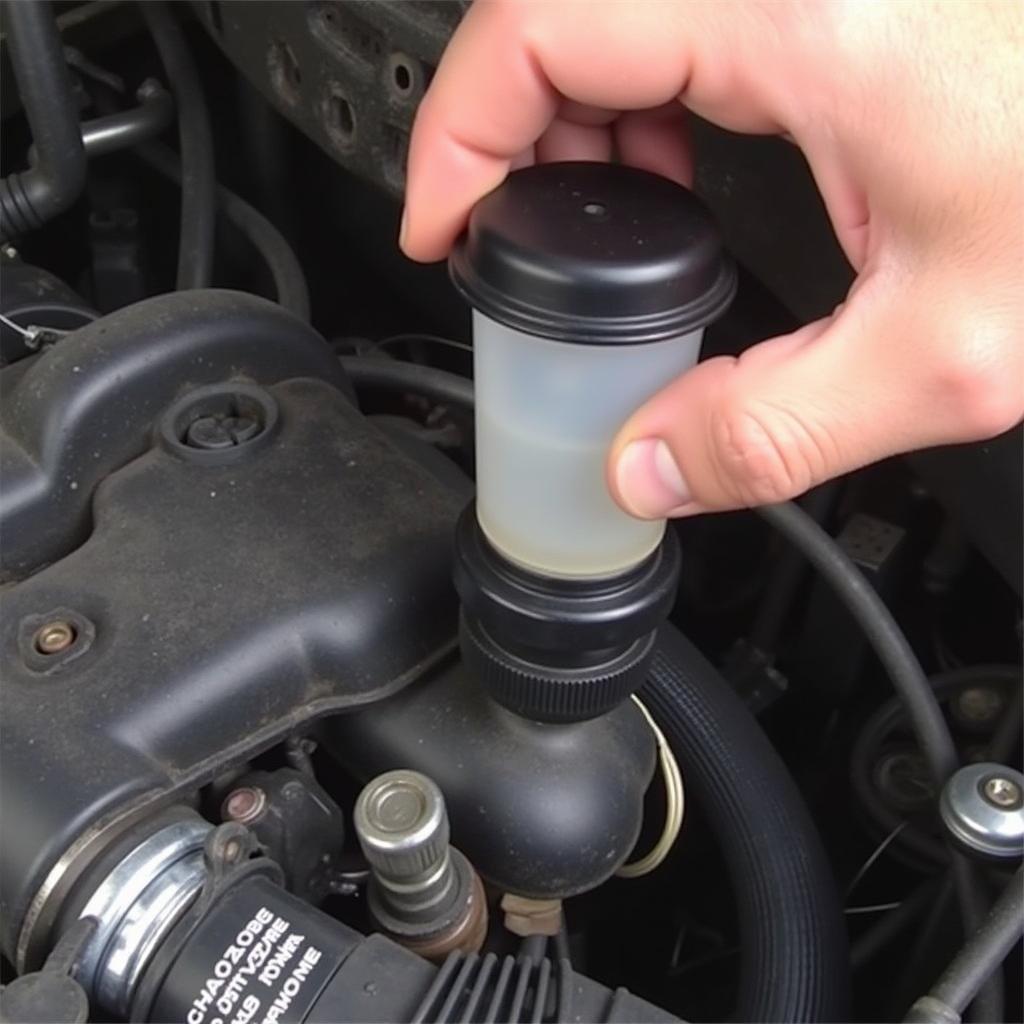Bypassing the anti-theft system on a Chevy Tahoe can be necessary when you’ve lost your key, have a faulty key fob, or are experiencing other system malfunctions. This article addresses various methods for overcoming these issues, ranging from simple DIY solutions to more complex procedures requiring professional assistance. We’ll cover everything from understanding how the system works to exploring diagnostic and programming options.
Understanding Your Chevy Tahoe’s Anti-Theft System
The anti-theft system in your Chevy Tahoe is designed to prevent unauthorized vehicle operation. It consists of several components, including the key fob, ignition cylinder, and the vehicle’s computer. When you insert the key or press the start button, the system verifies the key’s unique code. If the code doesn’t match, the engine won’t start. This system, while effective in deterring theft, can sometimes cause headaches for the rightful owner. Understanding how it functions is the first step to resolving anti-theft related problems. Common issues include a dying key fob battery, a damaged key, or even a malfunction within the vehicle’s electrical system.
Common Causes of Anti-Theft System Issues
Several factors can trigger anti-theft issues in a Chevy Tahoe. Sometimes, the problem is as simple as a weak key fob battery. Replacing the battery is a quick and inexpensive fix. Other times, the issue might be a faulty ignition switch, a damaged key, or a problem with the vehicle’s computer system. Identifying the root cause is crucial for effective troubleshooting. Incorrectly attempting to bypass the system can potentially damage the vehicle’s electrical components and lead to more costly repairs.
Troubleshooting Simple Anti-Theft Problems
Before diving into complex solutions, try these simple steps:
- Check the key fob battery: A low battery can prevent the anti-theft system from recognizing the key. Replace the battery and try starting the vehicle.
- Try the spare key: If you have a spare key, use it to see if the problem lies with the original key.
- Check the ignition switch: Ensure the key is inserted fully and turned correctly. A worn-out ignition switch might need replacement.
Advanced Troubleshooting and Bypass Techniques
If the simple solutions don’t work, you may need to explore more advanced options:
Using Remote Diagnostic Tools
Remote diagnostic tools can help pinpoint the specific fault within the anti-theft system. These tools connect to the vehicle’s onboard computer and read diagnostic trouble codes (DTCs). By analyzing these codes, you can identify the source of the problem. Professional automotive technicians often utilize these tools for efficient and accurate diagnostics.
Reprogramming the Key Fob
Sometimes, the key fob loses its programming and needs to be reprogrammed. This usually requires specialized equipment and software. You can often find locksmiths or automotive technicians who offer this service.
Bypassing the System with Professional Software
In certain situations, bypassing the anti-theft system with specialized software may be necessary. This is typically done by experienced professionals who have access to the required tools and knowledge. Improper use of this software can lead to damage to the vehicle’s computer system.
“When dealing with complex anti-theft issues, using remote diagnostics is often the most effective approach,” says John Miller, Senior Automotive Electrical Engineer at AutoTech Solutions. “It saves time and helps pinpoint the exact problem area.”
Seeking Professional Assistance
While some anti-theft issues can be resolved with DIY methods, others require professional intervention. If you’re unsure about performing any of the advanced troubleshooting steps, it’s best to consult a qualified automotive locksmith or technician.
Finding a Qualified Automotive Locksmith or Technician
Look for locksmiths or technicians specializing in automotive electronics and security systems. They have the necessary expertise and equipment to diagnose and resolve complex anti-theft problems.
“Attempting to bypass the anti-theft system without the proper knowledge can cause significant damage,” warns Maria Sanchez, Certified Automotive Locksmith at SecureCar Solutions. “It’s crucial to seek professional help when needed.”
Conclusion
Overpassing the anti-theft system on a Chevy Tahoe requires careful consideration and understanding of the system itself. While some solutions are straightforward, more complex issues necessitate professional help. Remember to prioritize safe and effective methods to avoid potential damage and ensure the long-term health of your vehicle. Always consider consulting a qualified technician when dealing with complex anti-theft issues in your Chevy Tahoe.
FAQ
- What should I do if my Chevy Tahoe key fob isn’t working? First, check the battery. If that doesn’t work, try your spare key.
- Can I reprogram my Chevy Tahoe key fob myself? This usually requires specialized equipment, so consulting a professional is recommended.
- Is it legal to bypass the anti-theft system on my Chevy Tahoe? Bypassing is legal for troubleshooting and repair purposes, but not for illegal activities.
- What are the risks of improperly bypassing the anti-theft system? You could damage your vehicle’s electrical system, leading to costly repairs.
- How much does it cost to have a professional bypass the anti-theft system? Costs vary depending on the complexity of the issue and the service provider.
- How can I find a qualified automotive locksmith or technician? Seek out specialists in automotive electronics and security systems.
- What are the common signs of a faulty anti-theft system in a Chevy Tahoe? Common signs include the vehicle not starting, the security light flashing, or the horn chirping repeatedly.


